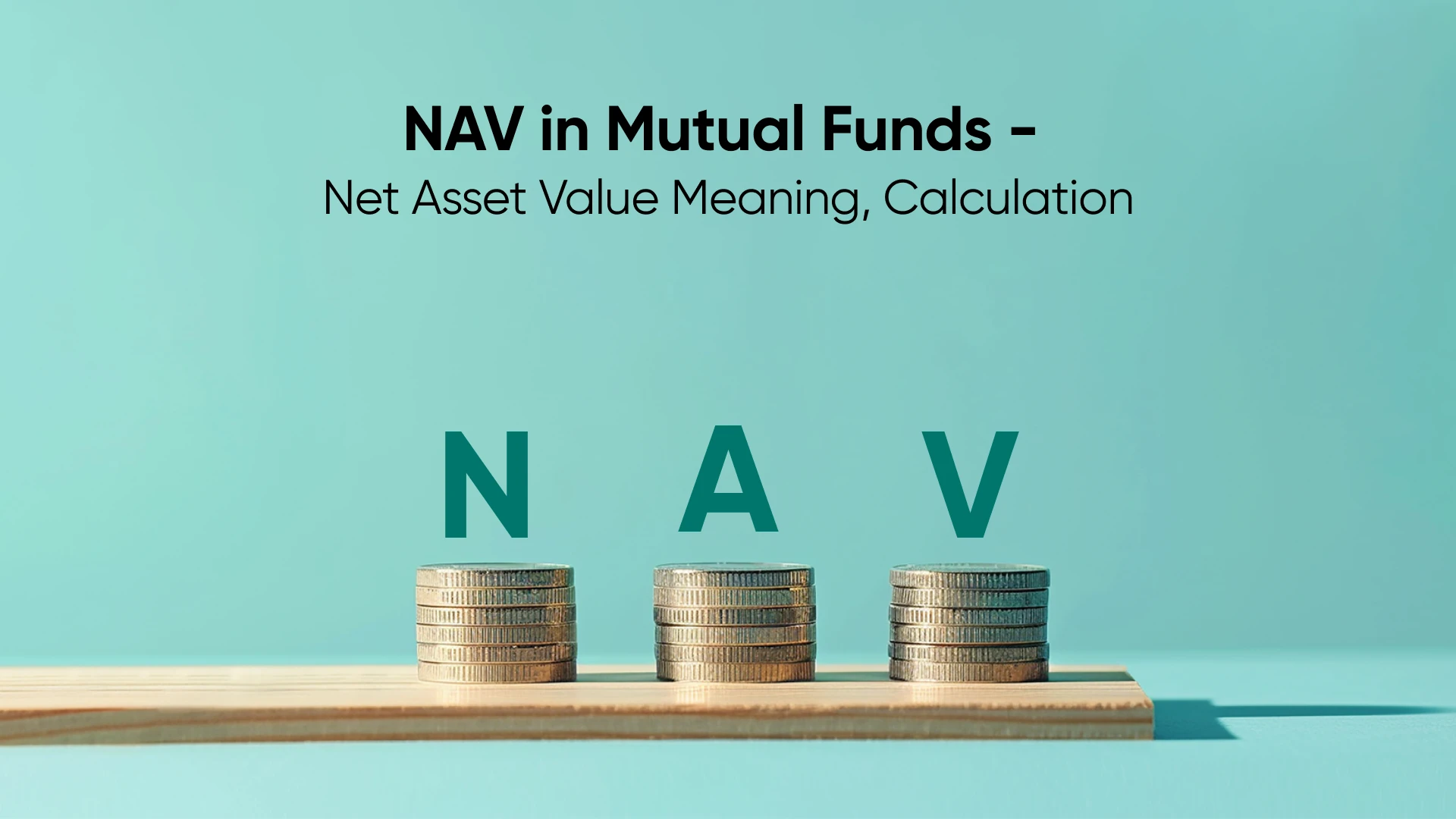Different Types of Mutual Funds Based on Various Categories

Mutual funds are a smart investment choice if you want to build wealth. There are a diverse range of mutual funds that cater to investors with different financial goals and risk appetite. As of 2024, mutual funds continue to be a popular choice, with a report by the Association of Mutual Funds of India (AMFI), stating total assets increased to ₹61.33 trillion in June 2024 from ₹44.83 trillion in June 2023.
This article explores different types of mutual funds categorised based on asset class, investment objective, structure, and risk.
Table of Contents
ToggleTypes of Mutual Funds Based on Asset Class
Asset class means a group of securities that have similar characteristics and fall under the same Laws & Regulations. The following are Mutual Funds based on asset class in India:
Equity Mutual Funds: Equity funds invest in equity shares of different companies. As per SEBI Mutual Fund Regulations in India, an equity mutual fund scheme must allocate at least 65% of its assets to equities or equities-related instruments.
Debt Funds: These funds include government bonds, corporate debt and treasury bills. They are a good option if you have a low-risk appetite and want a stable income.
Hybrid Funds: Hybrid funds are a combination of equity and debt. The combination of debt and equities balances the risk, potentially giving high returns.
Money-market Funds: These invest in funds like T-bills, bonds, commercial paper (CP) and certificates of deposit (CDs). Money market funds are short-term low-risk investments allowing for high liquidity with good returns.
Types of Mutual Funds Based on Investment Objective
Based on diverse financial goals, the investor can choose from these mutual funds categorised on different investment objectives:
Growth Funds: These funds aim for long-term capital appreciation. They invest in high-growth companies with potentially high risk attached. This fund is more suited if you have a high risk appetite and want to invest for at least 10-15 years.
Income Funds: These funds aim for regular income through income. These include investing in corporate bonds, government securities, money market instruments, certificates of deposits and debentures. This fund is more suited if you are looking for a steady income source with low risk.
Liquid Funds: These funds aim for high liquidity with security. These funds invest in short-term funds, without any lock-in period. This fund is suited for you if you seek high liquidity with minimal risk.
Tax-Saving Funds: These funds offer tax benefits under Section 80C. Equity-Linked Savings Schemes (ELSS) are a type of equity mutual fund that offers potential capital appreciation with funds eligible for a tax deduction of up to Rs 1.5 lakh.
Pension Funds: These funds aim for retirement financial security. These funds invest in a combination of equity and debt instruments. This helps to maximise the returns and even out the risk.
Aggressive Growth Funds: These funds aim for high returns having high risk over the long term. These are suited for investors with a high-risk appetite seeking to earn high returns.
Capital Protection Funds: These funds aim to protect your investments. These are suited for risk-averse investors who want modest returns while safeguarding their principal investments.
Also Read: Beginner’s Guide to Investment in India: Tips and Options
Types of Mutual Funds Based on Structure
Open-ended Mutual Funds: These funds offer flexible trading without any restrictions on the period or the number of units. Investors can buy or sell units at any time based on the current Net Asset Value (NAV). These funds are suited for investors looking for long-term wealth building and want flexibility in terms of entry or exit.
Closed-ended Mutual Funds: These funds have a limited number of units and a fixed maturity date. Investors can buy the units only during the New Fund Offer(NFO) launch. These are more suited for investors who want long-term investments with tax benefits.
Interval Mutual Funds: Interval mutual funds are a combination of open and closed-ended mutual funds. These are mostly close-ended funds with entry or exit points. These mutual funds are most suited for investors looking to balance liquidity with long-term investment.
Types of Mutual Funds Based on Risk
Mutual funds have varying degrees of risk attached that suit diverse investor requirements. Below are 4 types of mutual funds based on their risk:
Very Low Risk: These mutual funds include low-risk securities like government bonds, corporate bonds, and money market instruments. These are most suited for investors who want to preserve capital with minimal fluctuations.
Low Risk: More suited for investors who want to generate income with low risk.
Medium Risk: These mutual funds are a combination of equity and debt investments, offering a balance of risk and reward. These suit investors who want moderate growth with a relatively higher level of risk.
High Risk: These funds mostly include equity funds that offer high returns with high risk. These mutual funds suit investors with a high-risk appetite seeking to get high returns.
How to Choose the Right Mutual Fund Based on Your Investment
To choose the right mutual fund, the investor needs to factor in the mentioned parameters:
Investment Objective: It is important to define your financial goals out of your investment. This will help you choose mutual funds that best suit your needs and fulfil your expectations. For instance, if your goal is to buy a house, it is advisable to invest in a combination of large-cap and mid-cap funds over 5-8 years.
Risk Appetite: As an investor, your risk appetite depends on age, financial situation and the stage of life that you currently are in. Assess your risk appetite to choose a fund that fits.
Mutual Fund Type: Based on your investment goals choose the type of mutual fund that best fits your requirement. For instance, if you are looking to save on taxes, opt for ELSS (Equity Linked Savings Schemes (ELSS) that offer tax deductions under Section 80C.
Funds Past Performance: You need to check the fund’s performance over 3, 5 or 10 years. Choose funds that have performed well consistently.
Fund Manager/ Fund Investment Company: You need to choose a fund manager or fund management company with a proven track record in managing mutual funds over a long period.
Expense Ratio: It is the annual fee charged by the fund management company. Choose one that has a low expense ratio as it can affect long-term returns.
Aim for Diversification: Having a diverse mutual fund portfolio will ensure good returns while the impact of risk gets balanced out.
Understand Lock-In Period: The Lock-in period is the length of the period wherein the investor cannot sell, redeem or withdraw their investment. Most mutual funds have a lock-in period, that you need to check, to better manage your finances. For instance: the ELSS(Equity Linked Savings Scheme) mutual fund has a lock-in period of 3 years.
Investment Horizon: The period of your mutual funds will depend upon financial goals and risk appetite. For instance: To buy a house, you need to opt for hybrid funds over a term of 5-8 years.
Also Read: Things to Know About Loans Against Mutual Funds
Conclusion
Mutual funds are a great choice for growing your wealth. Investors can choose a mutual fund based on their financial goals. This article has categorised mutual funds on asset class, investment objective, structure and risk. Determine your financial goal and choose a mutual fund that best aligns with that goal. It is also imperative to choose the right fund management company or fund manager. Check their track record for a proven history of managing funds and long-term association with a given company to ensure there is stability in how the funds are managed.
Frequently Asked Questions
What Type Of Mutual Fund Is Best?
The best type of mutual fund depends on your financial goal, time horizon and risk appetite. For instance: if you are building your retirement funds, you can invest in equity funds that offer high returns in the long run.
How Do I Start A Mutual Fund?
To start a mutual fund, set your investment goal and choose a mutual fund that aligns with your goals. Open an account with a fund management company or investment platform. Complete the KYC and invest the amount in SIP of your choice.
Which Type Of Mutual Fund Is Safest?
Typically, mutual investment options like government bonds, corporate bonds and treasury bills have low risk and are considered relatively safest.
Which Mutual Fund Is Good For 5 Years?
It depends on the investor and their expectations of mutual funds.
Which Type Of Mutual Fund Gives The Highest Return?
Equity mutual funds give the highest return out of all mutual funds. However, they are volatile and carry the most risk.
How Many Types Of Mutual Funds Are There In India?
Mutual funds are categorised based on their structure, class and investment objective. Common types of mutual funds in India include equity funds, debt funds, and hybrid funds among others.
What Are The 4 P's Of Mutual Funds?
The 4 Ps of mutual funds include People, Philosophy, Process and Predictability.
What Is The 80% Rule For Mutual Funds?
As per SEBI (Securities and Exchange Board of India), the 80% rule for mutual funds requires certain mutual funds(large-cap, mid-cap, sectoral) to invest at least 80% of the fund’s assets in the defined asset class.
YOU MAY ALSO LIKE





Search by posts
Categories
- Blog (3)
- Credit History (24)
- Credit Line (7)
- Festive (2)
- Finance (15)
- Mutual Fund (9)
- Personal Loan (230)
- Tax (8)
- Zype (4)









